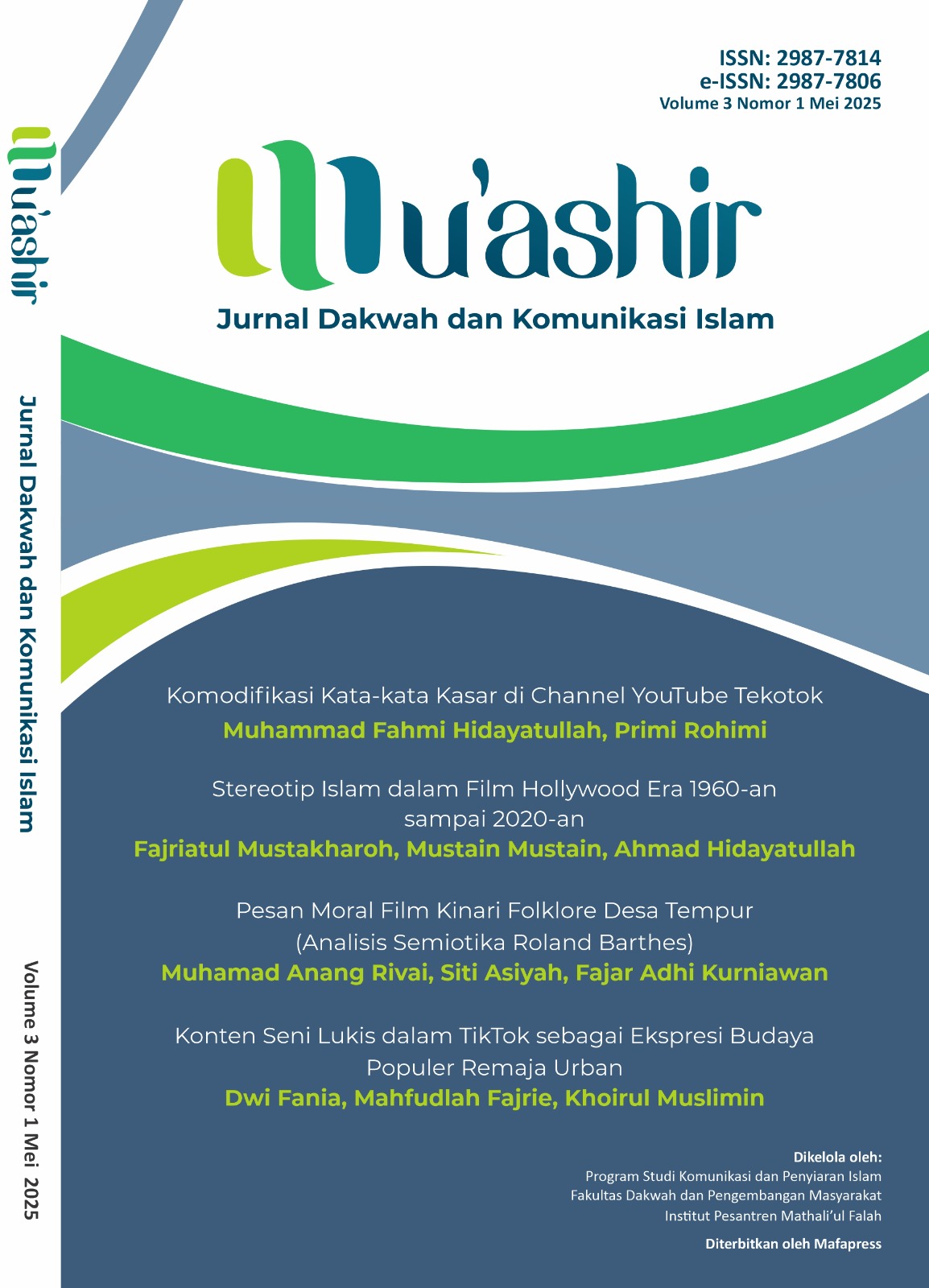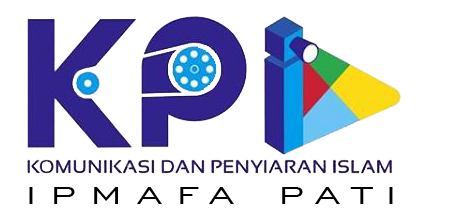Stereotip Islam dalam Film Hollywood Era 1960-an sampai 2020-an
Abstract
History records that the contestation between the West and Islam has been occurring for a long time, particularly during the Crusades, which lasted for three centuries (11th–13th centuries). Over time, these interactions gave rise to various stereotypes, especially about Islam, including within the narratives of Hollywood’s film industry. Using a qualitative research method with a critical discourse analysis approach, combined with the theory of social construction, this study seeks to explore how stereotypes of Islam have been narrated through Hollywood films from the 1960s to the 2020s. The findings of this study conclude that the representation of muslims in the Western film industry is often portrayed with a biased image, associating Islam with terrorism, violence, and fanaticism. These stereotypes emerge as a result of the long history of tensions between the Western world and the Islamic world, reinforced by political interests and media influence in shaping public opinion. The seven film samples—each from different decades—presented in this study illustrate how muslim characters are depicted as threats, ultimately reinforcing negative prejudices against Islam in global society for nearly the past century.
References
Gunawan, I. (2013). Metode Penelitian Kualitatif: Teori dan Praktik. Jakarta: Bumi Aksara.
Hadidjah, S. (2006). Hubungan Antara Nabi dengan Agama Samawi. Jurnal Hunafa, 3(4).
Irma Sari Pulungan, Ahmad Ruslan, & Desvian Bandarsyah. (2022). Perang Salib: Pertikaian Yang Melibatkan Dua Agama antar Kaum Kristen dengan Kaum Muslimin. Realita : Jurnal Penelitian Dan Kebudayaan Islam. Https://Doi.Org/10.30762/Realita.V20i1.106
Littlejohn, S., & Foss, K. (2009). Encyclopedia Communication Theories. In Family Communication.
Moncrief, J. W. (1903). A Short History Of Christianity . John M. Robertson . The American Journal Of Theology. Https://Doi.Org/10.1086/478342
Murdianto. (2018). Stereotipe, Prasangka dan Resistensinya: Studi Kasus Pada Etnis Madura dan Tionghoa di Indonesia [Stereotype, Prejudice And Resistance: A Case Study On Madurese And Chinese Ethnicities In Indonesia]. Qalamuna.
Muttaqin, M. Z. (2018). Ideologi: Faktor Konflik dan Kegagalan Timur Tengah. Nation State Journal Of International Studies. Https://Doi.Org/10.24076/Nsjis.2018v1i2.134
Rafidah, M. (2021). Perspektif Islamphobia Pasca Tragedi 11 September 2001. Local History & Heritage. Https://Doi.Org/10.57251/Lhh.V1i1.20
Supriadi. (2015). Analisis Wacana Kritis: Konsep dan Fungsinya Bagi Masyarakat. Aksara: Jurnal Bahasa dan Sastra, 16(2).
Triandis, H. C. (1994). Cultural and Social Behavior. New York: Mc Graw Hill, Inc.
Vaandering, Dorothy, & Reimer, K. E. (2021). Relational Critical Discourse Analysis: A Methodology to Challenge Researcher Assumptions. International Journal of Qualitative Methods. Https://Doi.Org/10.1177/16094069211020903

This work is licensed under a Creative Commons Attribution-ShareAlike 4.0 International License.
Copyright Notice
Authors who publish in this journal agree to the following terms:
- Authors retain copyright and grant the journal right of first publication with the work simultaneously licensed under a Creative Commons Attribution-ShareAlike 4.0 International License. that allows others to share the work with an acknowledgment of the work's authorship and initial publication in this journal.
- Authors are able to enter into separate, additional contractual arrangements for the non-exclusive distribution of the journal's published version of the work (e.g., post it to an institutional repository or publish it in a book), with an acknowledgment of its initial publication in this journal.
- Authors are permitted and encouraged to post their work online (e.g., in institutional repositories or on their website) prior to and during the submission process, as it can lead to productive exchanges, as well as earlier and greater citation of published work.

This work is licensed under Creative Commons Attribution-ShareAlike 4.0 International License.










